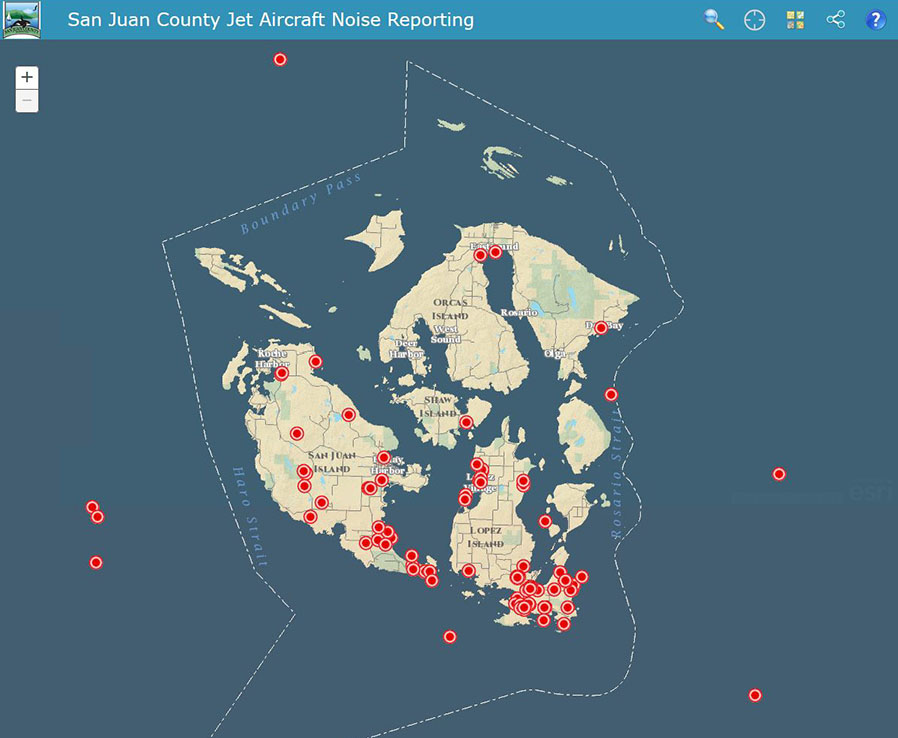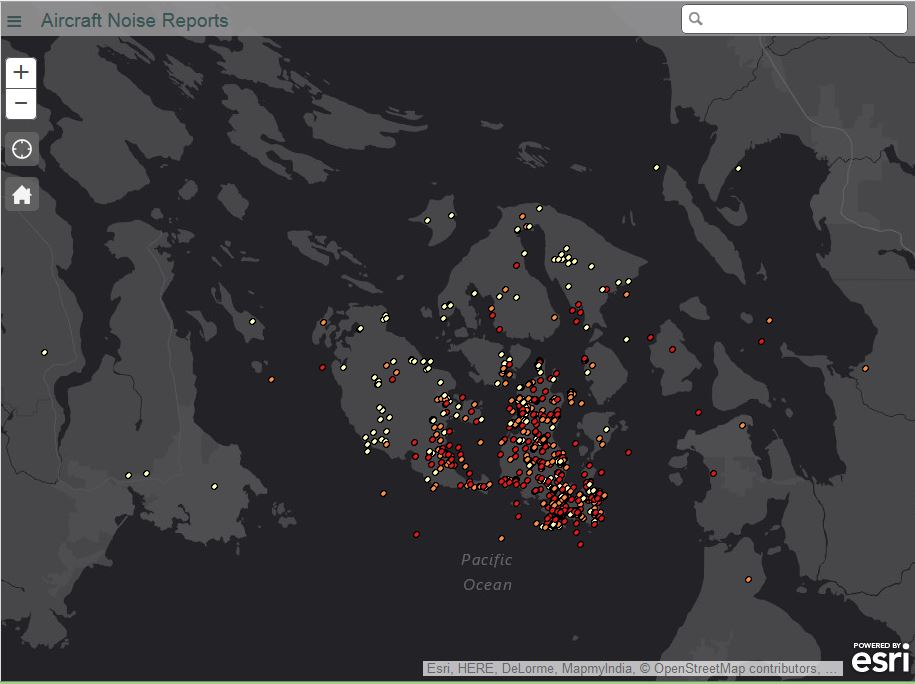— by Lin McNulty —
Where does your Growler fly? If it’s flying into or out of the NOLF (outlying field) just North of Coupeville, then you can read that flight schedule each week on Orcas Issues, as released by the Public Affairs Office at NAS Whidbey.
Often, however, these reports indicate no Growler activity planned for the week; yet, still, we hear that rumble, or vibration, or earth-shaking noise depending upon where we reside in the San Juans.
That’s because there is another, bigger field (Ault Field) which Growlers and other aircraft (currently including the quieter Prowlers–which will leave in June) utilize on a regular basis. There are no press releases advising us in advance of this activity and resultant noise level. A Navy spokesperson stated this information is basically not available in advance as they are a 24/7 operation.
When the Growlers are using Ault Field this is when we hear the loudest and most constant sounds, even though we have been notified that the Growlers will be having a “quiet week.” Ault Field lies directly across the water from Lopez, where earthquake-like activity has been reported.
 Noise complaints can be reported and logged by clicking on the map below maintained by San Juan County and forwarded to NAS Whidbey. This map, however, only shows noise complaints from the last 30 days.
Noise complaints can be reported and logged by clicking on the map below maintained by San Juan County and forwarded to NAS Whidbey. This map, however, only shows noise complaints from the last 30 days.
One might assume that making several clicks on this website three, four, five times daily, without any kind of response to what level of reporting will merit some action, or mitigation, or compensation, or explanation, gets old after awhile and, therefore, these results reflect only a fraction of what we are actually experiencing. What is the plan? How is complaining via mouse clicks going to change anything?
 Here’s what Rick Larsen said in Oct. 2014 following a meeting on Lopez:
Here’s what Rick Larsen said in Oct. 2014 following a meeting on Lopez:
“During this meeting, in addition to listening to the concerns of the Lopez community, I laid out my ideas about how to reduce the impact of jet noise on Lopez going forward. This plan includes finding funding for an acoustic hangar to reduce noise impact on Lopez Island, research into technology to reduce engine noise, software that might safely reduce the required number of training flights, and asking the Navy to do monitoring on the San Juans as part of an environmental impact study for the EA-18G Growler. Not all of these are immediate solutions, and this list is not the complete list of follow up items, but they are all worth exploring as part of a broad strategy.“
The map below claims to show a composite of all jet aircraft noise reports submitted via the San Juan County Jet Aircraft Noise Reporting website, which includes:
- Low Rumble
- Rumble and Vibration
- Disrupted Activities
- Extremely Loud
 I, myself, have clicked on the north end of East Sound more times than this map indicates, which piques my curiosity about the accuracy of this compiled data.
I, myself, have clicked on the north end of East Sound more times than this map indicates, which piques my curiosity about the accuracy of this compiled data.
Are we like the only dog in the neighborhood to bark at this noise? Do those in power think,”so what if 5,000 people gripe? Nobody cares about them and we’re preparing the Pacific NW for 21st century defense (translate warfare) and supplying thousands of jobs and getting our slice of the military defense pie.” Are we, then, merely a chihuahua barking at the ankle fur of a growly bear? How do we ramp up this bark and begin to do some meaningful and noticeable nipping?
In the meantime, we keep on keeping on. Incidents received from citizens are still being collected by the County of San Juan and submitted to Naval Air Station Whidbey Island. Noise complaints can also be made directly to Naval Air Station Whidbey Island by phone at (360) 257-6665, or via e-mail: comments.NASWI@navy.mil.
In addition, the website directs all other questions to NAS Whidbey Island Public Affairs Office at (360) 257-2286
Communicate directly with Rep. Larsen by signing up for his email at larsen.house.gov/contact-rick/email-rick. Or tweet him at https://twitter.com/RepRickLarsen.







